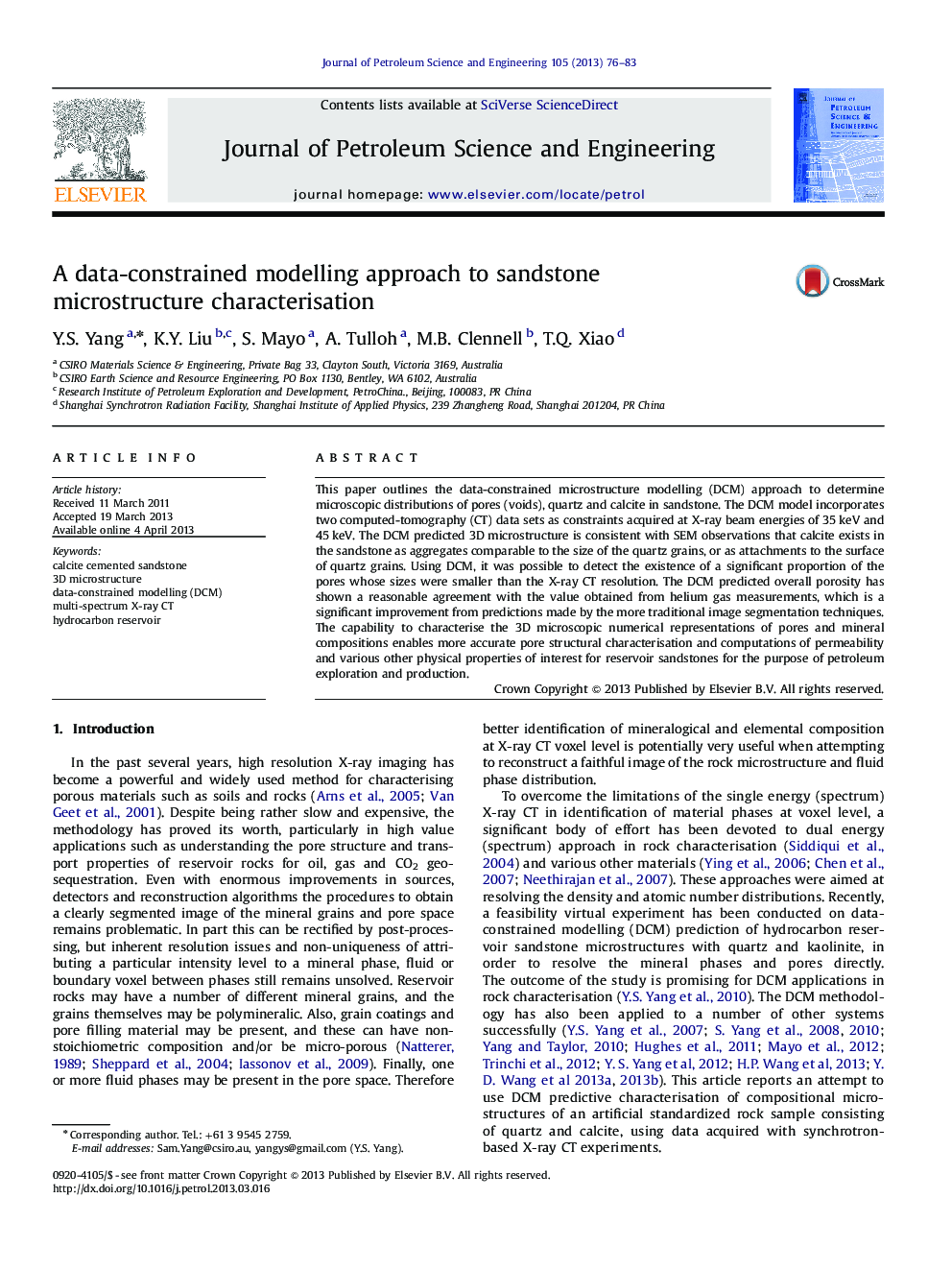| Article ID | Journal | Published Year | Pages | File Type |
|---|---|---|---|---|
| 1755242 | Journal of Petroleum Science and Engineering | 2013 | 8 Pages |
•Data-constrained modelling (DCM) is a generic method for microstructure characterisation.•DCM can characterise microscopic distributions of pores, quartz and calcite in sandstone.•DCM enables incorporation of effects of the pores which are smaller than the X-ray CT resolution.
This paper outlines the data-constrained microstructure modelling (DCM) approach to determine microscopic distributions of pores (voids), quartz and calcite in sandstone. The DCM model incorporates two computed-tomography (CT) data sets as constraints acquired at X-ray beam energies of 35 keV and 45 keV. The DCM predicted 3D microstructure is consistent with SEM observations that calcite exists in the sandstone as aggregates comparable to the size of the quartz grains, or as attachments to the surface of quartz grains. Using DCM, it was possible to detect the existence of a significant proportion of the pores whose sizes were smaller than the X-ray CT resolution. The DCM predicted overall porosity has shown a reasonable agreement with the value obtained from helium gas measurements, which is a significant improvement from predictions made by the more traditional image segmentation techniques. The capability to characterise the 3D microscopic numerical representations of pores and mineral compositions enables more accurate pore structural characterisation and computations of permeability and various other physical properties of interest for reservoir sandstones for the purpose of petroleum exploration and production.
